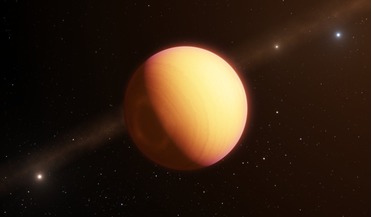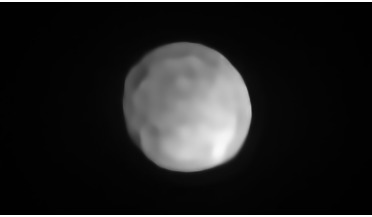 19 October 2018
Countdown begins for the launch of BepiColombo
19 October 2018
Countdown begins for the launch of BepiColombo
... other planet in the Solar System – just 0.01 degrees. Earth for comparison has an axial tilt of 23 degrees, while Venus’s tilt is a whopping 117 degrees, meaning its north pole is effectively pointing 'down.’ This tiny tilt also...
 27 March 2019
Storm-plagued exoplanet revealed in detail with GRAVITY
27 March 2019
Storm-plagued exoplanet revealed in detail with GRAVITY
... form. HR8799e is also completely inhospitable too; the exoplanet suffers from a powerful greenhouse effect – a bit like Venus – which heats the super giant to a scorching hot temperature of roughly 1000 °C. The exoplanet also wouldn’t have...
 22 May 2019
Water came to Earth when the Moon formed says study
22 May 2019
Water came to Earth when the Moon formed says study
... history to provide the water we see around us today. The same may have happened with the likes of Venus or Mars, but over eons, the water has disappeared for one reason or another. Many are also...
 24 July 2019
LightSail 2 unfurls its sails and soars through space
24 July 2019
LightSail 2 unfurls its sails and soars through space
... space agency’s experimental solar ‘Yacht’ called Ikaros. Launched in 2010, the craft was able to travel past Venus via nothing more than the momentum gained from the massless light particles (photons) bombarding the...
 25 October 2019
Ride-sharing mission hopes to study asteroid up close
25 October 2019
Ride-sharing mission hopes to study asteroid up close
... comes close enough frequently enough." The name Milo happened to come about in planning. It refers to the famous "Venus de Milo" statue, and with the associated planet name, just seemed to suit. In addition to organising the missions...
 28 October 2019
Hygiea asteroid could turn out to be the smallest dwarf planet yet
28 October 2019
Hygiea asteroid could turn out to be the smallest dwarf planet yet
... requirements: it is not a moon or satellite of another object, it orbits around the Sun, and, unlike a planet like Earth or Venus, it has not cleared the neighbourhood around its orbit. This last requirement is what stops objects like...